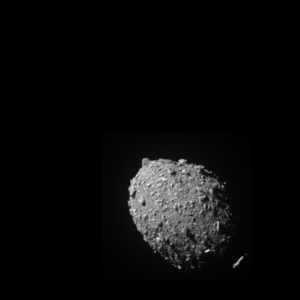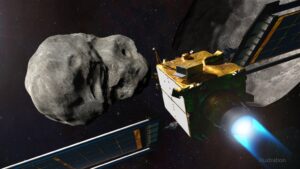It’s not common to hear cheers and excitement from a space agency after a satellite crashes. However, that is exactly what you would have heard inside the room with the NASA navigation team as the vending machine sized Double Asteroid Redirection Test (DART) spacecraft crashed into the surface of the asteroid Dimorphos on Sept. 26.
Dimorphos is a Greek name meaning “having two forms”. It’s an approximately 530-foot-sized asteroid orbiting around the larger sized asteroid Didymos. Dimorphos is classified as a minor natural satellite or moonlet.
The DART spacecraft’s 10-month journey came to an end at 7:14 p.m. Sept. 26 of 2022. Over 6 million miles away from Earth, moving at approximately 14,000 mph, the craft slammed into the surface of the asteroid. This caused an impact that shortened Dimorphos’ orbit by 10 minutes, marking the first time that humans have affected the orbit of a large celestial body.
DART was a simple, box-shaped spacecraft measuring roughly 3.9 x 4.3 x 4.3 feet. It was equipped with only one instrument, the Didymos Reconnaissance and Asteroid Camera for Optical navigation (DRACO). This camera worked together with navigation algorithms to enable the spacecraft to identify and distinguish between the two asteroids, successfully targeting and impacting the smaller one.

It’s not just a kinetic impact that was made that day. NASA officials say the outcome has an impact on all of us. “Planetary defense is a globally unifying effort that affects everyone living on Earth. Now we know we can aim a spacecraft with the precision needed to impact even a small body in space,” said Thomas Zurbuchen, an associate administrator for the Science Mission Directorate at NASA Headquarters.
In response to NASA’s success, The European Space Agency (ESA) plans to launch a follow up satellite. The satellite named Hera will perform post-impact surveys of the crash. Hera is equipped with new advanced technologies, allowing the spacecraft to perform autonomous navigation around the asteroid.

Set to launch around Oct. 2024, Hera will be the first probe to rendezvous with a binary asteroid system. ESA’s plan is for Hera to gather information that turns the experiment from a large-scale test, into data that leads to repeatable planetary defense techniques.

